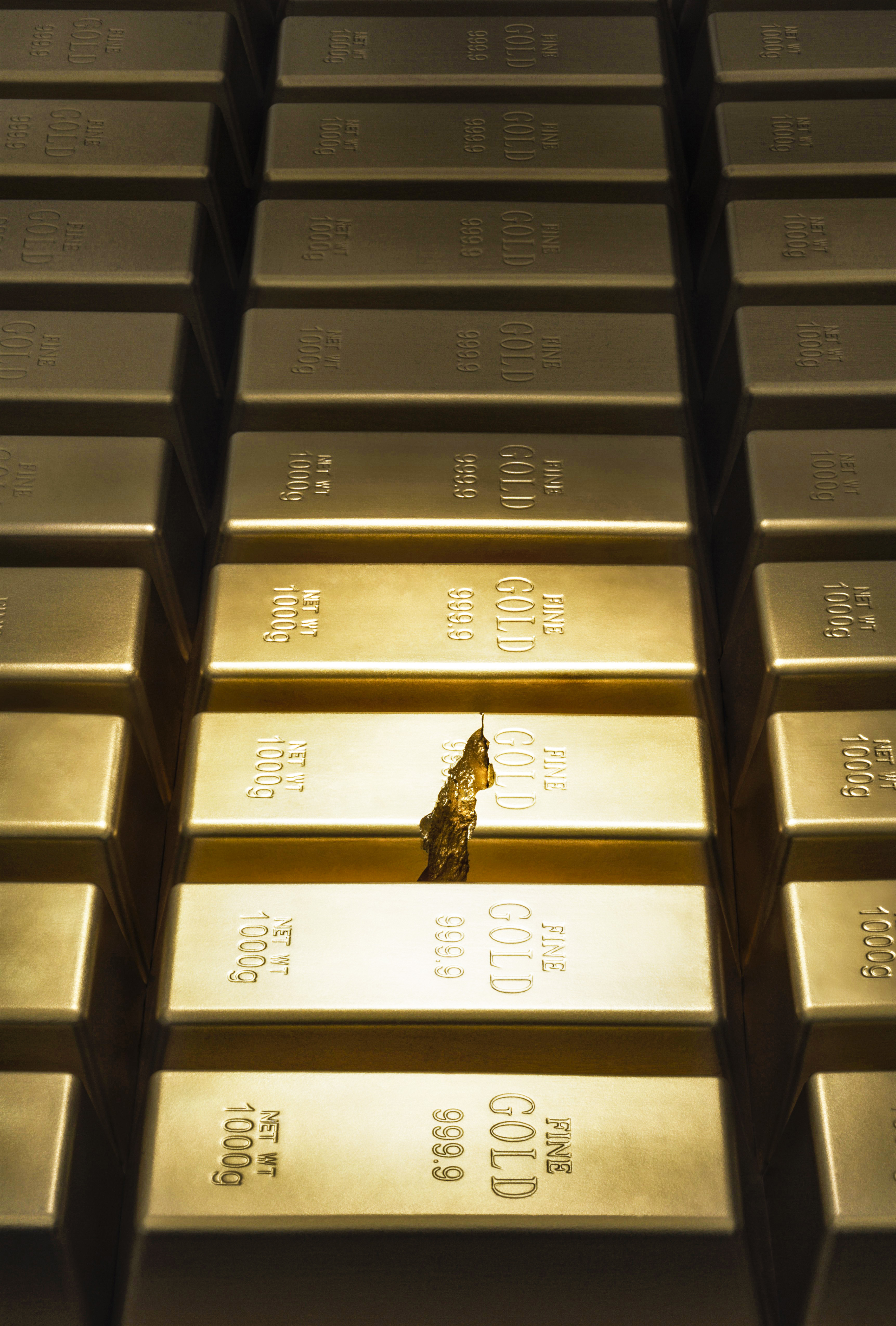Myths of the gold standard
Ted Cruz pines for the good old days of the gold standard. But the actual history of that monetary policy is vastly more complex than he lets on.


Many Republicans have long had simmering resentments against America's entire modern monetary system. These gripes boiled to the surface at Tuesday's GOP presidential debate.
Rand Paul accused the Federal Reserve of "destroying the value of the currency." Ted Cruz went farther, straightforwardly calling for the Fed to keep "our money tied to a stable level of gold."
American currency, which has not operated on any sort of gold standard in many decades, is not, in fact, being debased, and inflation has not taken off — either in the economy as a whole or for items like food. Still, it's worth reviewing the actual history of America's currency, what its implications are, and how they differed from the version Cruz suggested Tuesday night.
The Week
Escape your echo chamber. Get the facts behind the news, plus analysis from multiple perspectives.

Sign up for The Week's Free Newsletters
From our morning news briefing to a weekly Good News Newsletter, get the best of The Week delivered directly to your inbox.
From our morning news briefing to a weekly Good News Newsletter, get the best of The Week delivered directly to your inbox.
We had a gold standard under Bretton Woods, we had it for about 170 years of our nation's history, and enjoyed booming economic growth and lower inflation than we have had with the Fed now. [Ted Cruz]
Today, the modern monetary system has a dollar whose exchange rate floats freely, and there's no relationship whatsoever between the supply of U.S. dollars and the supply of gold. Before that was the Bretton Woods system Cruz referred to. It was an international agreement for how to handle currencies, and it did involve gold, but in a rather complex way. (We'll get back to that.) Bretton Woods lasted from its establishment in 1944 until the Nixon administration initiated a series of moves that brought it to a close in 1973.
Before Bretton Woods, America had a soup of different policies. This is the first problem for enthusiasts of the gold standard: There's actually a lot of different standards to choose from. At one point, "the U.S. was on a bimetallic standard where dollars could be converted into both gold and silver bullion. Or in some periods only silver. In other periods, only gold. In some periods, dollars could be converted into nothing, like the greenback period," Barry Eichengreen, an economist at the University of California, Berkeley, who has done a lot of historical work on monetary policy, told The Week.
So exactly what years the U.S. was on the gold standard "all depends on your definition of exactly what you think the elements of the gold standard were."
The big one was arguably the Gold Standard Act of 1900, which lasted until 1933. It officially called for the government to allow anyone to redeem $20 for an ounce of gold. (The Federal Reserve, America's central bank, was created in the midst of this period, in 1913.) But even this gold standard wasn't a "strict" one, if by "strict" we mean a system where the supply of dollars was absolutely tied to the supply of gold: "They were willing to exchange $20 for an ounce of gold, but it wasn't as if they only issued $20 for each ounce of gold," economist Dean Baker, who heads up the Center for Economic and Policy Research, explained to The Week. "So it was never that strict."
A free daily email with the biggest news stories of the day – and the best features from TheWeek.com
"But when they did have to in principle make good on it, they were mindful. They had to have gold reserves, so that was something the Federal Reserve watched closely."
The supply of gold thus put a pretty severe upper limit on how much money the U.S. government could issue during these years. Since there wasn't that much gold in the world, that sometimes forced prices to drop, causing periods of serious deflation. As a result, the late 1800s up through 1933 were something of a mess.
"There's a myth that the gold standard delivered stable prices and stable financial markets and a stable economy," Eichengreen said. But in reality, "there was a whole series of financial crises, like the one in 1907, that were almost as serious as the one that started in 1929 and the one that started in 2008. Those earlier crises regularly occurred under the gold standard."
So in 1933, President Roosevelt suspended the gold standard in a series of escalating phases. The general consensus among economists is that this was a crucial move that allowed the American economy to begin recovering from the Great Depression, because it freed up monetary policy to become much more expansionary.
That brings us to Bretton Woods system, which was established by an international agreement in 1944. The nuances here are crucial: Under this agreement, other participating countries could still exchange the dollars they held for a set amount of gold — $35 per ounce. But individual Americans no longer could. This established the U.S. dollar as the world's reserve currency.
Moreover, following World War II, America found itself in possession of half the world's gold stock. So, while we had made a commitment to other countries to keep exchanging dollars for gold, this enormous bounty meant that commitment imposed no effective limit on our ability to increase the U.S. money supply. "Monetary policy was not tied to or constrained by or limited by the gold stock for much of the Bretton Woods period," Eichengreen said. "The Federal Reserve had a considerable ability to adjust the level of interest rates under Bretton Woods, just like it has considerable room today to adjust the level of interest rates as it sees fit to try to hit its inflation target, and try to ensure financial stability."
As the '70s arrived, this system came under strain, as the supply of gold began to dwindle. Other countries worried about America's continuing ability to honor the exchange commitment. And America itself was dealing with rising inflation, probably brought on by a host of outside shocks, like food shortages and spikes in oil prices. So in 1971, Nixon shut down the ability of other countries to exchange dollars for gold. In 1973, we scrapped the whole Bretton Woods system, which inaugurated the modern monetary policy regime.
So: Let's talk about what's wrong with Cruz's story.
He's certainly correct that we enjoyed booming economic growth and relatively low inflation during much of the Bretton Woods period. But practically speaking, monetary policy under Bretton Woods functioned the way it does now — with the Fed freely adjusting interest rates up when it wanted to rein in inflation, and adjusting them down when it wanted to spur employment and job growth — as opposed to the way it functioned under any number of definitions of the gold standard. And it's profoundly misleading to suggest we had a singular gold standard for 170 years straight, or that Bretton Woods was a "gold standard" system in any way Cruz or Paul might define it.
America has gone through a whole slew of different currency systems over the last two centuries. And the further we've moved away from the kind of system Cruz and Paul and their fellow travelers seem to prefer, the more we've enjoyed a stable financial system and long runs of robust economic growth.
Jeff Spross was the economics and business correspondent at TheWeek.com. He was previously a reporter at ThinkProgress.
-
 Ssh! UK libraries worth travelling for
Ssh! UK libraries worth travelling forThe Week Recommends From architectural delights to a ‘literary oasis’, these are some of the best libraries around the country
-
 A fentanyl vaccine may be on the horizon
A fentanyl vaccine may be on the horizonUnder the radar Taking a serious jab at the opioid epidemic
-
 The 8 best comedy TV series of 2025
The 8 best comedy TV series of 2025the week recommends From quarterlife crises to Hollywood satires, these were the funniest shows of 2025
-
 Has Zohran Mamdani shown the Democrats how to win again?
Has Zohran Mamdani shown the Democrats how to win again?Today’s Big Question New York City mayoral election touted as victory for left-wing populists but moderate centrist wins elsewhere present more complex path for Democratic Party
-
 Millions turn out for anti-Trump ‘No Kings’ rallies
Millions turn out for anti-Trump ‘No Kings’ ralliesSpeed Read An estimated 7 million people participated, 2 million more than at the first ‘No Kings’ protest in June
-
 Ghislaine Maxwell: angling for a Trump pardon
Ghislaine Maxwell: angling for a Trump pardonTalking Point Convicted sex trafficker's testimony could shed new light on president's links to Jeffrey Epstein
-
 The last words and final moments of 40 presidents
The last words and final moments of 40 presidentsThe Explainer Some are eloquent quotes worthy of the holders of the highest office in the nation, and others... aren't
-
 The JFK files: the truth at last?
The JFK files: the truth at last?In The Spotlight More than 64,000 previously classified documents relating the 1963 assassination of John F. Kennedy have been released by the Trump administration
-
 'Seriously, not literally': how should the world take Donald Trump?
'Seriously, not literally': how should the world take Donald Trump?Today's big question White House rhetoric and reality look likely to become increasingly blurred
-
 Will Trump's 'madman' strategy pay off?
Will Trump's 'madman' strategy pay off?Today's Big Question Incoming US president likes to seem unpredictable but, this time round, world leaders could be wise to his playbook
-
 Democrats vs. Republicans: who are US billionaires backing?
Democrats vs. Republicans: who are US billionaires backing?The Explainer Younger tech titans join 'boys' club throwing money and support' behind President Trump, while older plutocrats quietly rebuke new administration
